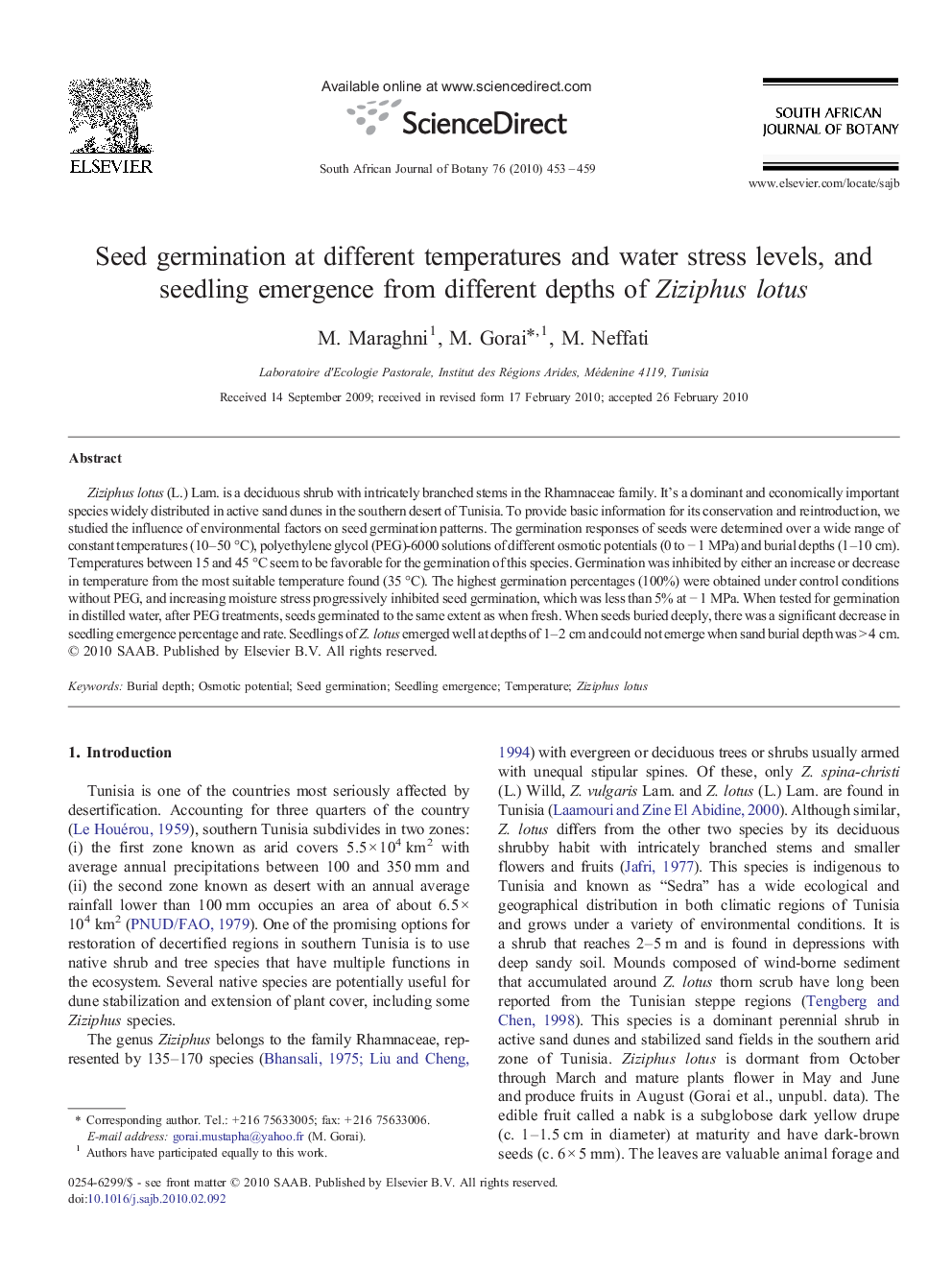| Article ID | Journal | Published Year | Pages | File Type |
|---|---|---|---|---|
| 4521627 | South African Journal of Botany | 2010 | 7 Pages |
Ziziphus lotus (L.) Lam. is a deciduous shrub with intricately branched stems in the Rhamnaceae family. It's a dominant and economically important species widely distributed in active sand dunes in the southern desert of Tunisia. To provide basic information for its conservation and reintroduction, we studied the influence of environmental factors on seed germination patterns. The germination responses of seeds were determined over a wide range of constant temperatures (10–50 °C), polyethylene glycol (PEG)-6000 solutions of different osmotic potentials (0 to − 1 MPa) and burial depths (1–10 cm). Temperatures between 15 and 45 °C seem to be favorable for the germination of this species. Germination was inhibited by either an increase or decrease in temperature from the most suitable temperature found (35 °C). The highest germination percentages (100%) were obtained under control conditions without PEG, and increasing moisture stress progressively inhibited seed germination, which was less than 5% at − 1 MPa. When tested for germination in distilled water, after PEG treatments, seeds germinated to the same extent as when fresh. When seeds buried deeply, there was a significant decrease in seedling emergence percentage and rate. Seedlings of Z. lotus emerged well at depths of 1–2 cm and could not emerge when sand burial depth was > 4 cm.
